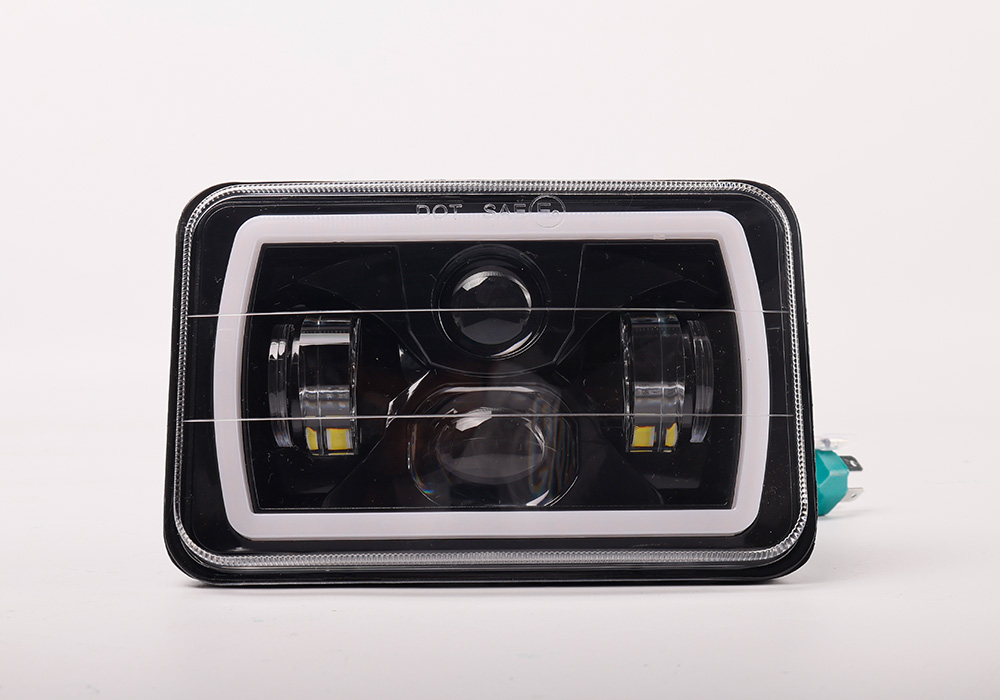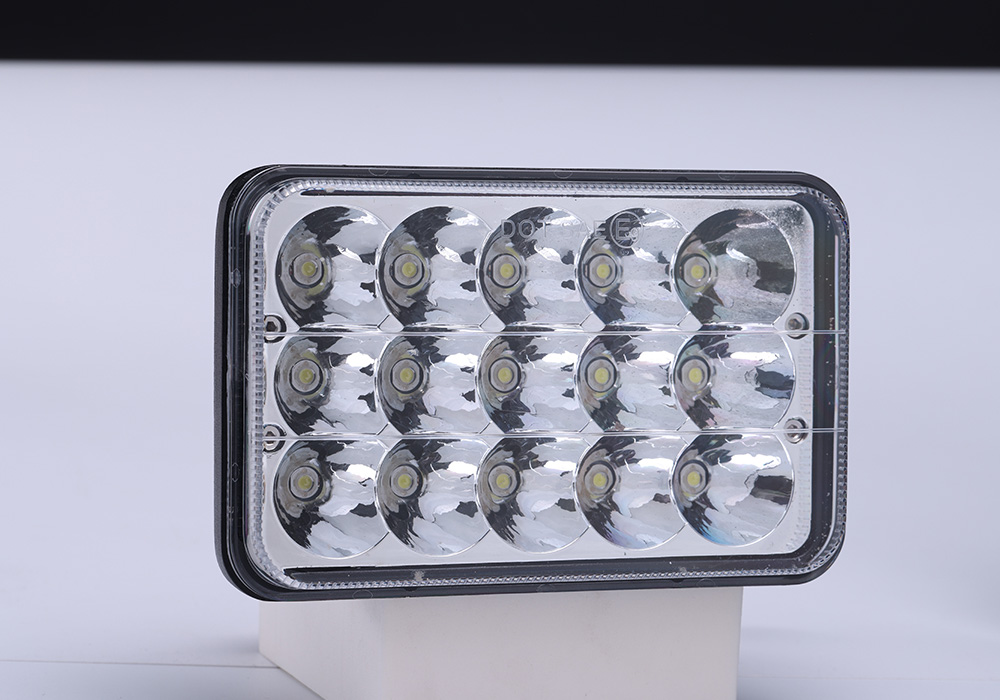5 Common Myths About 4x6 LED Headlights You Need to Know
- Abstract
- 1. Introduction
- 2. Myth 1: Excessive Brightness of LED Headlights Causes Glare
- 2.1 Beam Pattern Determines Glare
- 2.2 Impact of Low-Quality LEDs
- 3. Myth 2: LED Headlights Are Prone to Overheating and Premature Failure
- 3.1 Thermal Efficiency of LEDs
- 3.2 Advanced Thermal Management
- 4. Myth 3: LEDs Are Incompatible with Older Vehicles
- 4.1 Plug-and-Play Compatibility
- 4.2 Electrical Benefits
- 4.3 Rare Exceptions
- 5. Myth 4: LEDs Provide Limited Visibility Improvement
- 5.1 Luminous Efficacy and Beam Distribution
- 5.2 Daylight-Mimicking Color Temperature
- 6. Myth 5: LED Headlights Are Not Cost-Effective
- 6.1 Lifecycle Cost Advantages
- 6.2 Operational Efficiency
- 6.3 Durability and Environmental Considerations
- 7. Discussion and Implications
- 8. Conclusion
- Quick Q&As About 4x6 LED Headlights
Abstract
The evolution of automotive lighting technology has emphasized efficiency, safety, and sustainability. Among contemporary lighting solutions, 4x6 LED headlights have emerged as a significant advancement, offering enhanced luminous efficacy, longevity, and material sustainability. Despite widespread adoption, several misconceptions persist, potentially inhibiting their integration into older and commercial vehicles. This paper systematically examines five commonly cited myths regarding 4x6 LED headlights, presenting empirical evidence, technical rationale, and regulatory perspectives to clarify misconceptions and promote informed adoption.
1. Introduction
LED (Light Emitting Diode) technology has fundamentally transformed vehicle lighting systems, offering superior energy efficiency, increased durability, and enhanced optical performance relative to conventional halogen or incandescent systems. The 4x6 headlight configuration, prevalent in classic trucks, motorcycles, off-road vehicles, and commercial fleets, represents a critical interface between legacy vehicle design and modern lighting innovation.
However, adoption remains constrained by persistent myths that reflect historical limitations of early LED kits, anecdotal experiences, or general misunderstandings regarding luminous efficacy, thermal management, and optical engineering. Addressing these misconceptions is essential to support broader deployment of energy-efficient, environmentally sustainable lighting systems.
2. Myth 1: Excessive Brightness of LED Headlights Causes Glare
A prevalent concern is that LED headlights inherently generate hazardous glare for oncoming traffic. This assertion is largely unfounded when considering the principles of optical engineering.
2.1 Beam Pattern Determines Glare
Empirical studies indicate that glare arises primarily from improper beam alignment and uncontrolled light dispersion, rather than raw luminous output. Contemporary 4x6 LED headlights employ:
Precision-engineered projector lenses to define horizontal cutoffs
Optimized reflector geometries to concentrate light within the roadway envelope
Strategically positioned LED chips to maintain correct focal alignment with original halogen housings
These mechanisms ensure that illumination is maximized for the driver while minimizing upward light scatter, a principal source of glare (U.S. Department of Transportation, 2023).
2.2 Impact of Low-Quality LEDs
Instances of glare are typically attributable to low-quality aftermarket products characterized by oversized emitters, misaligned optics, and non-compliant focal lengths. Compliance with SAE, DOT, or ECE beam pattern standards is essential to mitigate these issues.
Conclusion: Glare is a design issue rather than an inherent limitation of LED technology.
3. Myth 2: LED Headlights Are Prone to Overheating and Premature Failure
A common misperception is that LED systems are thermally unstable, resulting in a shortened operational lifespan.
3.1 Thermal Efficiency of LEDs
Halogen bulbs convert approximately 85–90% of electrical energy into heat, whereas LEDs convert the majority into usable light, significantly reducing thermal load. Lower operating temperatures correspond to reduced semiconductor degradation and improved luminous longevity (DOE Solid-State Lighting Program, 2023).
3.2 Advanced Thermal Management
State-of-the-art 4x6 LED headlights incorporate comprehensive thermal solutions:
Die-cast aluminum heat sinks with optimized airflow
Thermally conductive substrates
Integrated thermal regulation circuits
Active cooling mechanisms for high-output units
These measures ensure sustained performance under continuous operation, even in elevated ambient temperatures and high-vibration environments.
Conclusion: Contemporary LED headlights are engineered to mitigate thermal stress and exhibit superior operational longevity relative to halogen systems.
4. Myth 3: LEDs Are Incompatible with Older Vehicles
Concerns persist that integrating LEDs into classic or legacy vehicles necessitates extensive electrical modification.
4.1 Plug-and-Play Compatibility
Most 4x6 LED units are designed as direct replacements for sealed-beam halogens, supporting standard 3-pin connectors, 12V or 24V systems, and minimal auxiliary modifications. This design facilitates straightforward installation without cutting, splicing, or rewiring.
4.2 Electrical Benefits
LEDs draw significantly less current than halogens, thereby:
Reducing thermal stress on connectors and wires
Decreasing alternator load
Enhancing system reliability
Such characteristics are particularly advantageous for aging electrical systems (SAE International, 2023).
4.3 Rare Exceptions
Minor adaptations, including relay harnesses or grounding improvements, may be necessary in isolated cases but do not represent a systemic limitation.
Conclusion: LEDs are broadly compatible with older vehicle platforms, often providing protective benefits to legacy electrical systems.
5. Myth 4: LEDs Provide Limited Visibility Improvement
Skeptics argue that LEDs primarily serve aesthetic purposes rather than functional enhancements.
5.1 Luminous Efficacy and Beam Distribution
LEDs typically exhibit 80–120 lumens/watt, markedly exceeding halogen performance (15–20 lumens/watt). This facilitates:
Increased forward illumination
Uniform light distribution
Extended beam reach
Reduced dark zones
5.2 Daylight-Mimicking Color Temperature
With correlated color temperatures of 5000K–6500K, LEDs approximate natural daylight, improving:
Contrast sensitivity
Detection of hazards
Road sign recognition
Driver reaction time (NHTSA, 2023)
Halogen lamps (~3200K) provide suboptimal spectral illumination in night-driving conditions.
Conclusion: LED headlights significantly enhance visibility, situational awareness, and driving safety.
6. Myth 5: LED Headlights Are Not Cost-Effective
Initial acquisition costs for LEDs exceed those of halogen systems, prompting concerns regarding economic justification.
6.1 Lifecycle Cost Advantages
Halogen lifespan: 500–1,000 hours
LED lifespan: 30,000–50,000 hours
Reduced replacement frequency diminishes maintenance costs, operational downtime, and environmental burden.
6.2 Operational Efficiency
Reduced electrical demand lowers alternator strain, indirectly conserving fuel and reducing CO₂ emissions over the vehicle’s operational life (EPA Green Vehicle Guide, 2023).
6.3 Durability and Environmental Considerations
LED headlights exhibit resilience against vibration, impact, and temperature extremes. Furthermore, longer lifespan reduces material waste and energy consumption associated with manufacturing and disposal.
Conclusion: When considering lifespan, durability, and energy efficiency, LED headlights are economically superior to halogen systems over the long term.
7. Discussion and Implications
This review demonstrates that persistent myths about 4x6 LED headlights are largely founded on early-generation product limitations, anecdotal reports, and incomplete understanding of optical and thermal engineering principles. Empirical data and regulatory guidance indicate that:
Properly engineered LEDs do not produce excessive glare
Thermal management is robust and reliable
Legacy vehicles can safely adopt LED technology
Luminous performance materially enhances night-driving safety
Long-term economic and environmental benefits outweigh initial costs
Consequently, stakeholders—including fleet operators, restoration enthusiasts, and automotive engineers—should consider integrating high-quality 4x6 LED headlights as part of sustainable, energy-efficient vehicle upgrades.
8. Conclusion
The adoption of 4x6 LED headlights represents an intersection of performance, safety, and environmental responsibility. By addressing misconceptions through evidence-based analysis, this paper supports the informed adoption of LEDs in both legacy and modern vehicle platforms. Comprehensive evaluation of optical design, thermal management, electrical compatibility, luminous efficacy, and lifecycle economics demonstrates that the advantages of LED lighting extend beyond aesthetics, encompassing tangible improvements in safety, efficiency, and sustainability.
Quick Q&As About 4x6 LED Headlights
Q1: Do LED headlights cause glare?
A: No—properly engineered LED headlights maintain controlled beam patterns that prevent glare.
Q2: Do LEDs overheat easily?
A: Modern LEDs use advanced cooling systems, making overheating unlikely.
Q3: Can older vehicles use LED headlights?
A: Yes. Most 4x6 LED headlights are plug-and-play and reduce load on old wiring.
Q4: Do LEDs really improve visibility?
A: Absolutely. They offer brighter, whiter, and more uniform light for safer nighttime driving.
Q5: Are LEDs worth the cost?
A: Yes—their long lifespan, durability, and energy savings make them far more cost-effective over time.
To learn more, you can check out these articles:
Why 4x6 LED Headlights Are Better Than Traditional Bulbs
How to Install 4x6 LED Headlights on Your Car: A Complete Guide
Learn more about our automotive lighting products.

Enhance your vehicle's visibility with Bliauto's 4x6 LED Headlights—Model 5S6. Perfect for wholesale buyers, these high-performance LED 4x6 headlights deliver exceptional brightness and durability, ensuring a safer driving experience. Ideal for those seeking reliable and efficient lighting solutions.

Introducing the Bliauto 4x6 LED Headlights—Model 5S2, designed for optimal visibility and style. Experience the best 4x6 LED headlights with superior brightness and durability. Upgrade your vehicle with Bliauto's cutting-edge technology for safe and efficient driving. Perfect for those seeking enhanced road illumination.

Discover the Bliauto 4x6 LED Headlights—Model 5S1, expertly designed for superior illumination and durability. Perfect for enthusiasts seeking premium quality, our LED 4x6 headlights are available for wholesale, ensuring you get the best performance at exceptional value. Illuminate your path with confidence today!

Bliauto Motorcycle Headlight - Model C1H-WA: High-quality LED design from leading brand manufacturers of motorcycle headlights. Precision Manufacturing Motorcycle Headlight ensures high visibility, durability, and easy fit for all riders.
Connect with Bliauto for Automotive LED Lights Solution
Bliauto is dedicated to designing innovative automotive LED lighting systems. Let's talk about your needs!
© 2025 Bliauto All Rights Reserved.




Bliauto
Bliauto Light
Bliauto
Bliauto Light
Bliauto
Whatsapp: +8618811846160